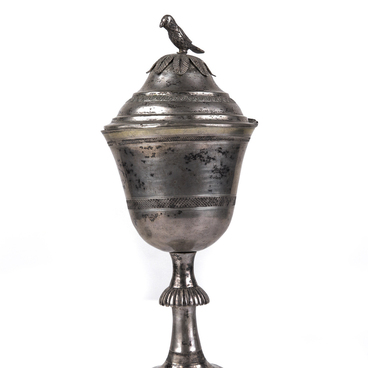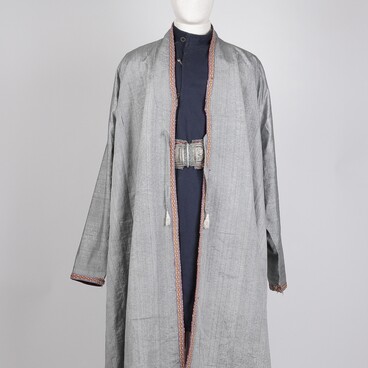The city of Bukhara in Uzbekistan is one of the oldest in Central Asia, over 2,500 years old. Bukharian Jews called themselves “Israel” or “Yahudi”, which is the Tajik word for a “Jew”. Their culture for several centuries was closely intertwined with that of the Muslims, but retained its own color and national characteristics.
The everyday attire of Bukharian Jews was similar to the traditional clothing of the neighboring population — Uzbeks and Tajiks, but their festive outfits were different. The dresses of Bukharian Jewish women were wider, and they reached down to the ankles. They were sewn of semi-silk or silk fabrics with bright colors of local handmade or imported factory materials: there were no textile factories in Central Asia at the end of the 19th century.
A silk dress was an obligatory item in the closet of every Bukharian Jewish woman. Silk in a woman’s clothing spoke of her family’s wealth and, according to popular belief, had magical properties and protected her from evil forces.
Women wore two dresses — the lower one was light and the upper one was of a richer color. The most popular shade in both men’ and women’s clothing was cherry. On top of a festive dress, a Burkharan Jewish woman wore a camisole made of plain or patterned fabrics.
An obligatory attribute of a Bukharian Jewish married woman was a kerchief rumoli pulakchi made of fine mesh fabric. It was first worn by a bride during the wedding ceremony under the wedding canopy, which was called “chupah”. The newlywed wore the kerchief for 40 days after the wedding, receiving guests and female relatives.
Burkharian Jewish women wore the rumoli pulakchi kerchief over a tuppi tos (literally “round hat”). It was decorated with zamin duzi, a pattern of solid embroidery in gold thread. Wearing a headscarf, the embroidered front part of the cap was left open and the ends of the kerchief hung freely on the chest or were thrown back. Married women up to old age wore the kerchief in another way — crossing the ends under the chin and tying them at the back of the neck. Bukharian Jewish women wore this headdress on holidays and special occasions.
The everyday attire of Bukharian Jews was similar to the traditional clothing of the neighboring population — Uzbeks and Tajiks, but their festive outfits were different. The dresses of Bukharian Jewish women were wider, and they reached down to the ankles. They were sewn of semi-silk or silk fabrics with bright colors of local handmade or imported factory materials: there were no textile factories in Central Asia at the end of the 19th century.
A silk dress was an obligatory item in the closet of every Bukharian Jewish woman. Silk in a woman’s clothing spoke of her family’s wealth and, according to popular belief, had magical properties and protected her from evil forces.
Women wore two dresses — the lower one was light and the upper one was of a richer color. The most popular shade in both men’ and women’s clothing was cherry. On top of a festive dress, a Burkharan Jewish woman wore a camisole made of plain or patterned fabrics.
An obligatory attribute of a Bukharian Jewish married woman was a kerchief rumoli pulakchi made of fine mesh fabric. It was first worn by a bride during the wedding ceremony under the wedding canopy, which was called “chupah”. The newlywed wore the kerchief for 40 days after the wedding, receiving guests and female relatives.
Burkharian Jewish women wore the rumoli pulakchi kerchief over a tuppi tos (literally “round hat”). It was decorated with zamin duzi, a pattern of solid embroidery in gold thread. Wearing a headscarf, the embroidered front part of the cap was left open and the ends of the kerchief hung freely on the chest or were thrown back. Married women up to old age wore the kerchief in another way — crossing the ends under the chin and tying them at the back of the neck. Bukharian Jewish women wore this headdress on holidays and special occasions.



